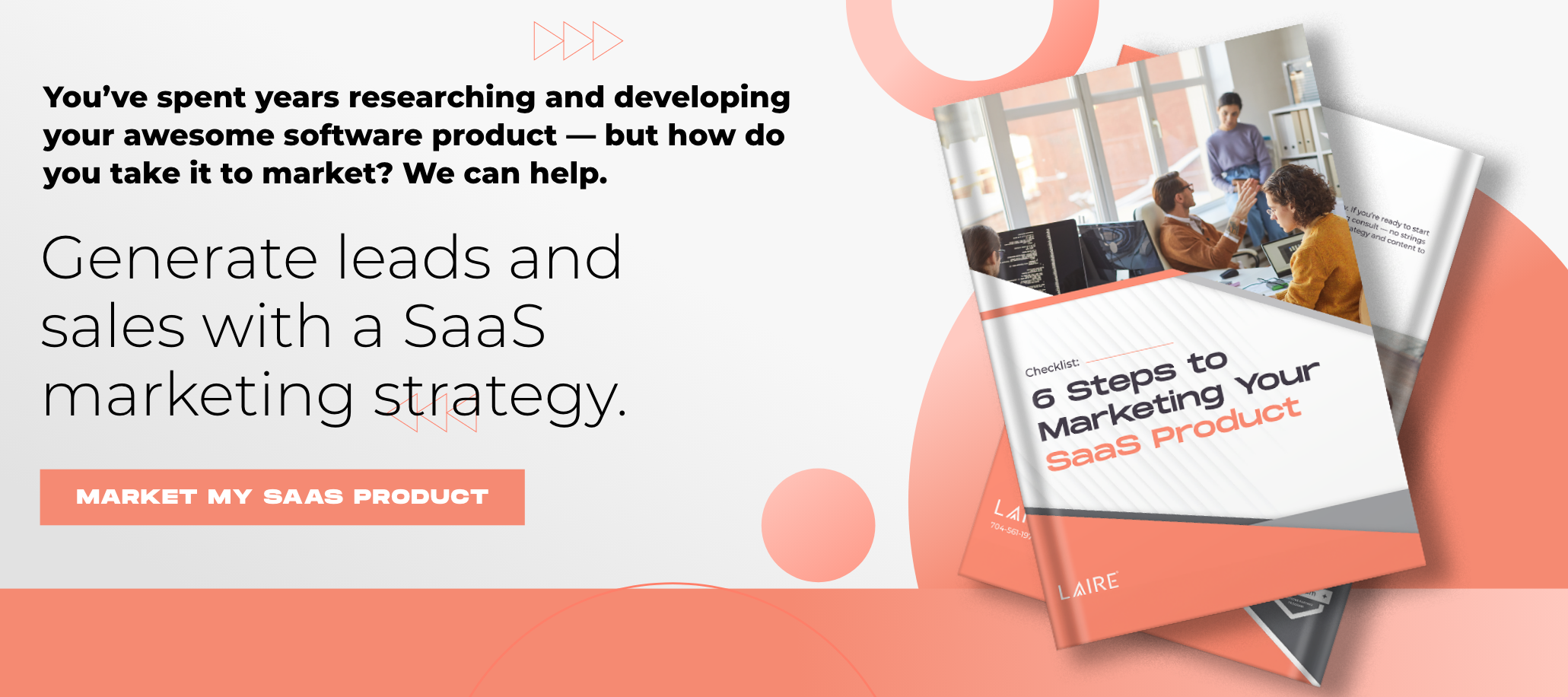In today’s marketing landscape, there is no shortage of data on which to base strategic decisions. But the sheer volume of marketing data can itself make evaluating marketing strategy difficult. How do you sort useful information from extraneous information? Which metrics truly matter? To figure out which information is most important to your business, return to your priorities. The most effective data, after all, is that which helps you make accurate, evidence-based decisions about marketing strategy— decisions that reduce costs, improve ROI, and increase sales.
Stay away from vanity metrics and focus instead on those that can provide your team with usable feedback. Of course, it can be challenging to evaluate which data is useful and which is not, especially if your team works with software that offers a wealth of metrics to choose from. That’s why in this article, we’ll be exploring some of the best metrics for evaluating the success of your SaaS marketing strategy. But before we begin, let’s explore the current SaaS landscape in a bit more detail.
The SaaS Business Landscape
SaaS (software as a service) businesses create and sell software to businesses, organizations, and individuals. SaaS businesses work on a subscription-based model, which offers reliable revenue. It also means that having effective sales and marketing teams is vital because each customer a SaaS business attains has a high average value.
SaaS businesses are thriving right now. In times of economic hardship, companies often look to cut costs through automation, which can mean replacing human employees with software that performs the same function. From accounting software to job applicant screening software, SaaS businesses are well-positioned to thrive through the remainder of the pandemic and beyond.
It’s worth mentioning some of the unique challenges the SaaS industry faces as well, as these, too, shape the future of the industry. SaaS businesses sell subscriptions for software that is hosted in the cloud, and as we know, it can be expensive to maintain the infrastructure necessary to support this function. SaaS is a high-growth, high-competition industry, and newcomers may find themselves edged out by established players with more resources, or even bought out.
What sets the SaaS industry apart in terms of marketing opportunities and strategy?
- High lifetime customer value
- High-competition market for B2B software
- Can be challenging to sell sophisticated software without confusing potential customers
- Word of mouth is a powerful sales tool
- Hefty price tag means the sales funnel can take longer
Key Metrics for a Successful SaaS Marketing Strategy
Customer Acquisition Cost
In order to accurately evaluate how effective, and by extension, cost-effective, your marketing efforts are, you need detailed information about how much you spend on marketing to gain a single paying customer. In its most rudimentary form, you can take stock of this metric by comparing your number of new customers in a certain period to your marketing spend in that same period. But if you want to get more precise, break down how your customers find you, and which marketing functions they interact with before they buy. Not only will this help your team understand which marketing strategies convert best, as we’ll get into later— it can also let you evaluate each strategy individually by cost and efficacy together. After all, the most expensive marketing strategies aren’t always the most effective ones.
Lifetime Customer Value
One of the secret weapons of SaaS companies is their subscription-based model. People are notoriously reluctant to end subscriptions once they’ve begun, and this is only more true when it comes to software that becomes vital to a business’ day-to-day operations. These subscriptions provide SaaS companies with reliable, stable revenue over an extended period of time. This makes the lifetime customer value, or the amount of revenue that a customer brings in for your business over the course of your relationship, high compared to other industries.
Use the data you have available to calculate the average lifetime customer value that a new customer will bring in for your business. Once you have this number, you can use it to decide how much capital you’re willing to spend on marketing. Your average customer acquisition cost (see above) shouldn’t be more than your average lifetime customer value.
Customer Churn Rate
Customer churn is the loss of paying customers who decide to quit your service or switch to a competitor. What percentage of your active, paying customers each year cancel their subscription? That number is your customer churn rate, and it’s a key metric for evaluating many business functions. For one, it can help you judge how well your product serves your customers’ needs. Customers who are unsatisfied likely won’t stick around for long. But it can also help you figure out whether your marketing strategies are targeting the right personas. You can have the best software in the world, but if you’re marketing it to people who have no need for it or who can’t appreciate what it can do, it’s natural to have a high rate of customer churn. Keep an eye on this metric to make sure that your marketing strategies are reaching those who would benefit most from working with your software.
Recurring Revenue
Another key SaaS metric is recurring revenue or the amount of revenue your company can expect to earn from existing customers in a set time frame. You can calculate this as MRR (monthly recurring revenue) or ARR (annual recurring revenue). Either way, recurring revenue is one to keep an eye on, as it can help predict the financial health of your company and set budgets accordingly. From a marketing perspective, it’s worth breaking down your recurring revenue to understand who your biggest customers are, so you can target other, similar companies with your marketing efforts.
Customer Retention
Customer retention is key for any business, but it’s especially important for those in the SaaS industry. This is because recurring revenue, a key asset of SaaS businesses, is dependent on predictably retaining customers. If you’re making big operational decisions based on estimations of recurring revenue, it’s all the more important that your team accurately predict how many customers you’ll retain. Customer retention is also an indicator of how well your product meets your customers’ needs.
It can be difficult to predict how many customers you’ll naturally lose over a period of time, and why. But in calculating your Net Promoter Score (NPS), you’ll gain some insight into your future customer retention. NPS is calculated by asking your customers how satisfied they are with your product on a scale from one to 10. Customers who respond with a low score are dissatisfied and are more likely to quit using your services in the future.
As is the case with customer churn, these metrics are useful for marketing teams because they help you evaluate how effectively you’re connecting with people who’d most benefit from and enjoy your software.
Time to Sell/Upsell
It’s also worth tracking your average time to sell and time to upsell. You might know this as the lead velocity rate (LVR), or the speed at which a customer moves from prospect to paying customer. Because of the cost and recurring commitment of SaaS products, customers tend to spend a good chunk of time in the sales funnel before they decide to buy. This makes it all the more important to track your metrics in this area. Which marketing/promotional/sales materials do your customers most often view immediately before they purchase? Are pop-ups or email sequences more effective at convincing existing customers to upgrade to more comprehensive plans? You need this information at your disposal to improve the efficacy of your sales funnel and to increase lead velocity rate.
Annual Growth
Of course, you don’t just want to minimize your customer churn and increase retention— actual growth needs to be a priority as well. And as far as marketing metrics go, annual growth is key to answering this central question: are our marketing tactics making sales? Though sluggish sales can be due in part to fluctuations in the economy or industry, they can also be a sign that your marketing strategies aren’t reaching the right people at the right time.
Customer Engagement
Are your customers engaged with your product? Similar to your Net Promoter Score, customer engagement metrics let your team assess how well your customers are connecting with the product you provide. Marketing materials aren’t just for making sales— they also serve a key function in keeping customers engaged and updated about your business. If the only communication they receive from you is always hyper-focused on upselling, they might find that off-putting or desperate. That’s where engagement tactics like content marketing can be helpful and effective.
Number of Sales
The most basic of SaaS marketing metrics, and yet no less important for its simplicity. Good marketing strategies lead to sales. Sales numbers should give your team an easy metric for the trajectory of your strategies as a whole.
Profitability
Lastly, there’s profitability. Profitability asks you to weigh the costs of doing business (overhead, infrastructure, labor, marketing, and advertising costs) against your revenue (recurring revenue, customer retention, customer churn rate, growth, and engagement). This big-picture perspective is necessary, but it is still worth breaking it down into its component parts to get a more nuanced perspective on which strategies are working and which need improvement.
Revenue growth doesn’t happen overnight, especially for SaaS businesses, with their longer sales funnels and high lifetime customer value. In order to grow, you have to invest not only in marketing your software effectively but also in analyzing your marketing performance and constantly iterating to find better ways of working. Data can empower your team to make informed decisions.
Where to Start?
If you aren’t sure where to begin, let LAIRE help you determine what’s working well and what needs improvement. Our team will assess your data and create a customized SaaS marketing plan that addresses business weaknesses and leans into overall strengths. Learn more about the strategies we use to create effective SaaS marketing campaigns by downloading our free SaaS marketing checklist.

.png?width=750&name=KPI%20for%20SaaS%20Campaign%20Blog%20(1).png)

